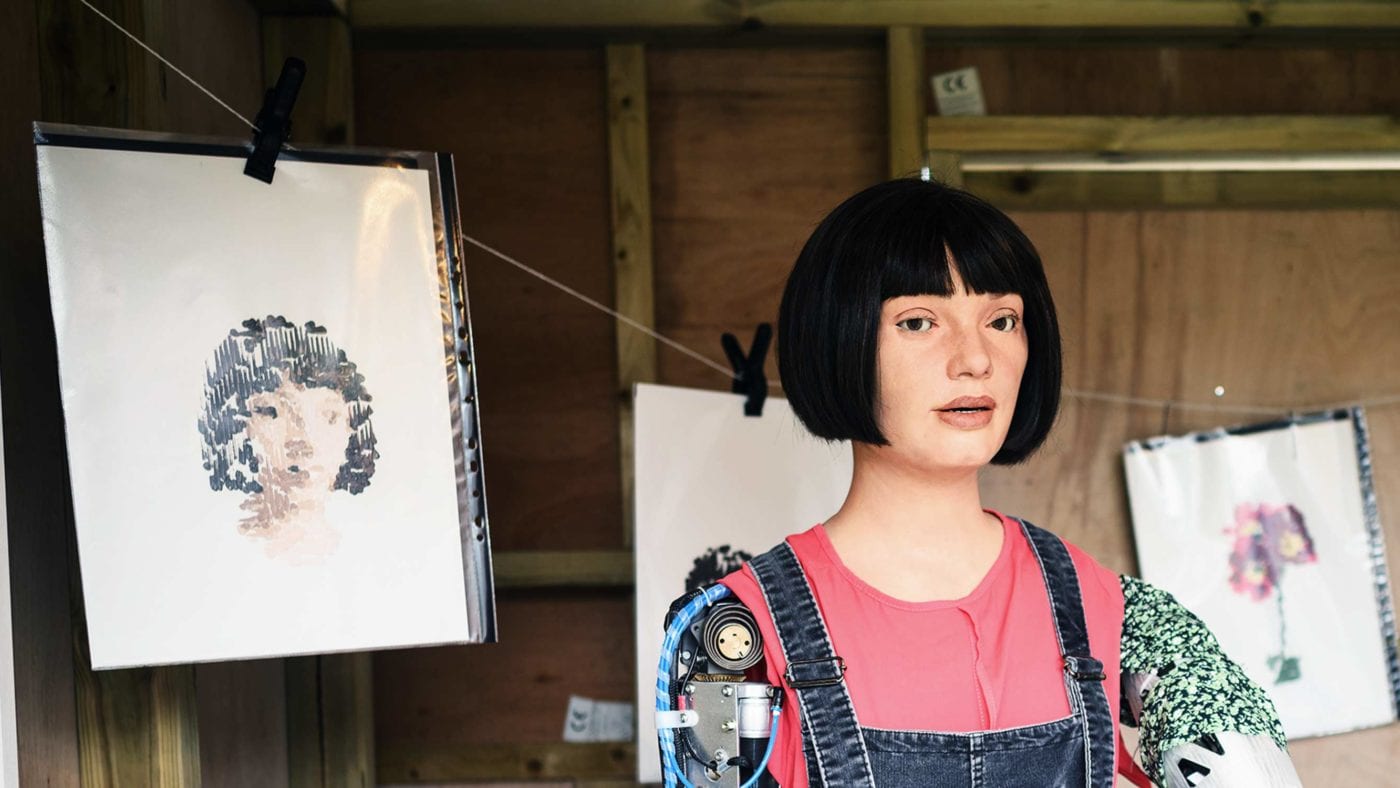The great Pablo Picasso once quipped that ‘good artists borrow, great artists steal’. But would he still have felt that way if he saw one of his Cubist masterpieces reproduced by art robot Ai-Da, who addressed the House of Lords this week? New Artificial Intelligence tools have made it possible to create and copy intricate artwork with the click of a button, plumbing questions about the ethics of artistry and human creativity.
Is creativity under attack from the rise of AI? Is AI-generated art created by increasingly sentient robots such as Ai-Da a sophisticated form of plagiarism or the biggest revolution in art history since Renaissance painters used oil paint and anatomical studies to produce realistic representations of the human figure? As AI becomes more advanced, some of these developments should sound alarm bells about the human experience, intellectual property and our dignity needs.
Neuroscientific research shows that art can enhance brain function and well-being as mirror neurons make people feel like they’re physically experiencing a painting. No wonder therefore that some argue that the proliferation of new art – even if it is generated by a pulseless laptop – is a cause for celebration. At a more basic level, AI programmes can be a force for good by sparking interest in lost cultural gems. Researchers at University College London recently used an algorithm based on Van Gogh’s expanded collection to turn an X-ray of his ‘Wrestlers’ portrait into a full-colour painting. Other scientists reproduced Klimt paintings destroyed in a fire based on crumpled black-and-white photos.
But the waters are muddied when it comes to creating new art, as new tools such as DALL-E 2, Midjourney and Stable Diffusion are taught to scoop up millions of images on the internet and automatically generate new ones in the same style. This new level of sophistication was demonstrated this summer when a prize at the Colorado State Fair was awarded to a work created by an AI system powered by text prompts. The judges naturally assumed that it had been produced by a human being. Legally, we are in untested waters. Is it lawful for an AI programme to truffle hunt for copyrighted work without permission, attribution or compensation? And, perhaps more importantly, is it ethical?
These new technologies create prickly ethical and legal dilemmas and could seriously threaten the livelihood of creatives. There is a glimmer of hope as history reminds us of the resilience of human creativity. After all, photography did not replace painting, despite warnings by 19th-century French poet Charles Baudelaire and his peers that it is art’s most dangerous enemy.
Just as photography ushered in new art forms, AI-generated art could inspire a new generation of compelling oeuvres. At least Ai-Da thinks so. The art robot told the House of Lords that the role of technology in creating art will continue to grow as artists ‘find new ways to use technology to express themselves…and explore the relationship between technology, society and culture’.
She might be right but we must not underestimate the potential for harm. We live in a world where art is commodified and the lines between real and fake are becoming increasingly blurred. In a sign of the limitations of technology, AI-Da’s historic speech this week was interrupted as the robot had to be rebooted. This is a reminder that we need to stay alert to the dangers of AI while humans still, for now, have the upper hand.
AI has become a permanent fixture in our daily lives. It is part and parcel of our online searches, our hospital visits and the algorithms which influence our voting decisions and determine the success of our mortgage applications. This has serious implications for our sense of agency and our dignity needs, which we need to sustain our social existence. AI impacts these needs by reinforcing or endangering them – sometimes both. That is why the debate around AI ethics needs to go beyond headline-grabbing issues such as driverless cars or the moral dilemmas of deploying ‘killer robots’. We need to dig deeper by exploring what makes us human and addressing age-old anxieties and fears that have occupied humanity. Human creativity and freedom of expression needs to be at the core of this debate.
The safe and sustainable use of AI can only be achieved when human dignity is factored in. Strict oversight mechanisms are needed to ensure that the positive features of AI outshine the risks associated with it. In the art space this means increasing transparency and setting clear-cut rules: artists caught in the AI web must be given control over how their works are used and compensated accordingly. Let us not forget that the beauty of Renaissance masters – and what made them so revolutionary at the time – was their interest in humanism and the individual. We need to stay true to this ethos and steer the next generation of Ai-Das in a direction that benefits people and protects the human spirit, while addressing intellectual property rights.
Click here to subscribe to our daily briefing – the best pieces from CapX and across the web.
CapX depends on the generosity of its readers. If you value what we do, please consider making a donation.


